Peyton won’t allow scoliosis to work against her and is ready for the challenges of high school and beyond.
By FELICITY DARVILLE
IT’S amazing the things you will learn if you sit down and have a heart to heart with a child. I did this the other day with 11-year-old Peyton Gomez. In the simplest, purest way, she shared an outlook on life that everyone should apply to their own. Her way of handling life and the curveball it threw her is nothing short of phenomenal.
In March of this year, Peyton’s mother, Desiree Roberts, took her to the doctor for her annual physical. She has been attending the same health centre since she was six. This time, she was seen by a different doctor. Immediately upon entering the room, the doctor pointed out something unusual and asked Peyton’s mother if she noticed it. Peyton nor her mother knew what the doctor was referring to. Honestly, it took a trained eye to pick up on it. Peyton had a curvature in her spine. This curvature caused her body to be asymmetrical, but just looking at her, one may never notice it. The doctor asked her to take off her shirt and turn around. When the doctor asked Peyton to touch her toes, the truth was revealed and it became obvious that something was misaligned.
Peyton was officially diagnosed with Scoliosis. It is a three-dimensional abnormality that occurs when the spine becomes rotated and curved sideways. It occurs most often during the growth spurt just before puberty. However, there is infantile, juvenile and adolescent scoliosis. Some may think that carrying heavy backpacks or sleeping on the side causes scoliosis, but this is not the case. When discovered in adolescence, rapid growth is occurring, and the detection of a curve at this stage should be monitored closely for progression as the child’s skeleton develops.
The doctor who thankfully made the discovery is Dr Yolanda Jones-Griffin. She ordered an x-ray and immediately upon seeing the image, she and Desiree could see the dramatic curve. A mild curve is considered to be 20 degrees or less. Peyton’s curve was 33 degrees. Since then, a follow-up X-ray showed that the curve progressed to 36 degrees. Peyton was then seen by Dr Dane Bowe, followed by Dr Valentine Grimes, who prescribed her a brace. It would cover her entire chest, back and torso. The makers of the brace said they had back orders, because there was a spike in the number of children diagnosed with scoliosis between January and April.
Symptoms usually include one shoulder blade that is higher than the other or sticks out more than the other, uneven hips, a rotating spine, breathing problems, and back pain.
On April 8, Peyton was sculpted for her brace and it was ordered by Lewis Orthopedics. Dr Valentine Grimes is her orthopedic physician. By May 12, she was fitted and began wearing the brace, which has changed the way she lives.
Just imagine having to wear a hard plaster brace that runs from under the arm to the bottom of the torso. It has affected her mobility, and has changed the way she sleeps. But, surprisingly, Peyton is very upbeat and optimistic about the change that has come to her life.
“I am thankful that the doctor caught it when she did,” Peyton told me.
“She said I could have had this since I was six. They say that once you get to 40 degrees, you have to consider surgery or they may not be able to fix it anymore.”
Desiree says that the process has been very costly. The additional physician’s visits, the tests including x-rays and an MRI, and a brace that cost $2,500. Some parents, she said, may not be able to afford it. For this reason, she agreed with Peyton that if parents can catch it early, children would have the best chance of proper, and hopefully less expensive care.
Peyton says that some people with scoliosis may choose to have surgery with only a ten-degree abnormality of the spine. However, she chooses to be patient and hopes that the brace and additional therapy will correct her condition while she is still young and her spine is still growing.
She blew me away with her confidence in dealing with a condition that affects 3 percent of all adolescents. Without intervention, scoliosis can be disabling.
“I don’t really worry about it at all,” Petyon said.
“I am just taking it as it comes. I just try to be happy about it because it could have been worse. I just deal with it and stay positive. It doesn’t hinder me too much from my normal activities. It can be a bit uncomfortable when I go to sleep, and I can feel the pad inside the brace pushing me one way when my spine is trying to push the other way. I have to wear it basically 24 hours a day except when I go to bathe. But sometimes my mother would let me have a small break when I really feel like I need it. But I don’t mind wearing it; it doesn’t bother me at all. I haven’t had to worry about any bullying, and I wouldn’t even let that bother me because I know I am doing this to get better.”
“I told my physical education teacher about it and he was like, ‘You are still going to do all of these exercises!’ He asked if I could play dodgeball. When you play dodgeball, you are not allowed to hit upper areas like the face. You can only hit from the waist down. When I was playing, someone hit me at the waist and I didn’t feel it. They said, ‘Peyton got hit!’ I was like, ‘No, I didn’t’. They said, ‘That’s not fair!’ I said, ‘Yes it is!’ I didn’t feel it. That was funny. I just kept on playing.”
“When my teacher told the class about it, most of the kids said ok, and then two second later, they forgot,” she said, laughing.
Although she claims to be a bit shy, this brave recent grade six graduate of St John’s College says she wanted to tell her entire school about scoliosis. Since becoming aware of her condition, she has thought of other schoolmates whom she feels should be checked out also, because “they lean to one side, too”.
Peyton is an avid swimmer and a member of Blue Waves Swim Club. Doctors have told her that swimming is therapeutic for her condition and her coaches are very supportive. She has found herself looking out for the signs of scoliosis in other children, knowing that the earlier it is caught, the better.
I asked her if she is happy that the brace, which has to be worn for about two years, will be coming off in her teenage years, when looks seem to become even more important to a girl. She told me that it didn’t matter what age she was when she found out. She would wear it with pride knowing that it would help her to get better.
“I wouldn’t mind,” she replied.
“I would probably be brave enough to wear this with a crop top. I would make an outfit out of it!”
Peyton hopes that by sharing her story, all parents would take time out and study their children’s spine, and take them for regular check-ups to ensure that they don’t have a condition like hers – one that could have gone undetected for even longer. She dreams of being able to attend a scoliosis camp in the United States one day soon, to meet other children with the condition and to receive innovative therapy treatment.
Peyton is also very artistic and says she may want to get into art and design in the future. She also has a great love for animals. Personally, she wants a cockatoo. As an adult, Peyton says she wants to have many animals as pets, including dogs. For now, she has been avoiding dogs since wearing the brace. She feels it makes her a bit more vulnerable because she wouldn’t be able to run away if necessary. However, she isn’t allowing it to deter her from her love of dogs or wanting to own them in the future.
She also dreams of having an orphanage with “at least 30 children” one day. Before adopting them, she says she will “get rich first”!
A beautiful girl with an amazing smile and a confident character, Peyton has received accolades from her teachers and coaches.
“I’ve only been working with Peyton a few months; however, her willingness to improve is quite commendable,” says her swim coach Sherwaine Arthurs.
“She would never shy away from any workout and displays an attitude of an athlete that any coach would love to work with. She listens well and does an excellent job of following instructions. Her diagnosis has never influenced her drive, dedication and determination to learn and improve. She always displays and exemplifies the mannerism of a true and quality athlete.”
Ms Bernard of St John’s wrote this note to Peyton upon her graduation: “Your respectful attitude and humility will be missed. I was lucky to have been your teacher this year. A little bit of you will always be with me.”
Peyton also loves poetry. She has even done duet poetry with another classmate.
Her teacher Ms Clarke sent her this note at graduation: “You are a special girl with an amazing sense of humour. You are super cool! Keep Writing, because with your focus and technique, you’ll soar!”
With everything going for her, Peyton won’t allow scoliosis to work against her. She is ready for the challenges of high school and beyond, confident that her cool and calm attitude towards any challenge will help her to continue to rise above them all.
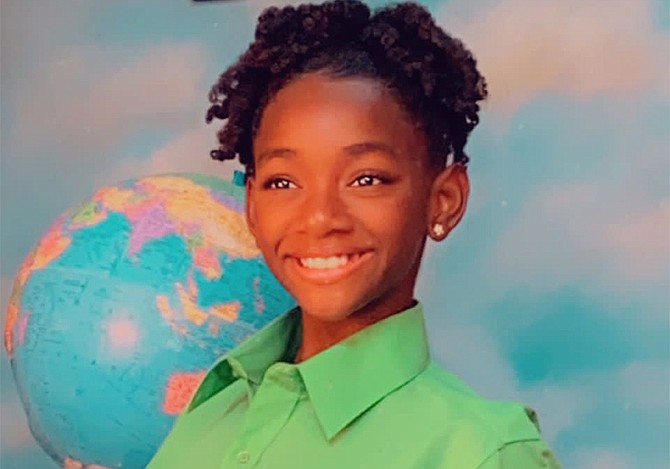
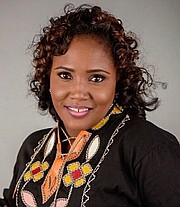
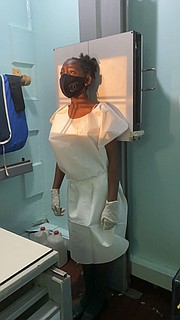
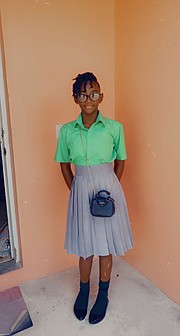
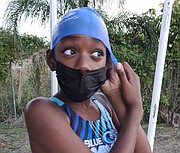
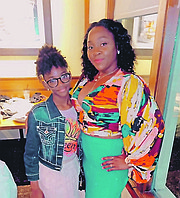




Comments
Use the comment form below to begin a discussion about this content.
Sign in to comment
Or login with:
OpenID